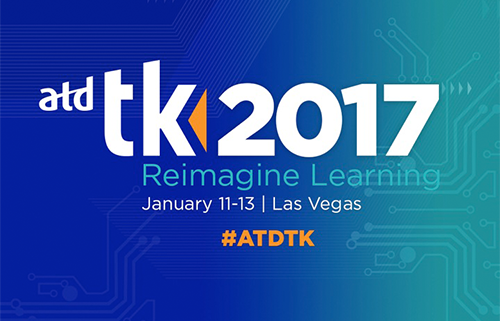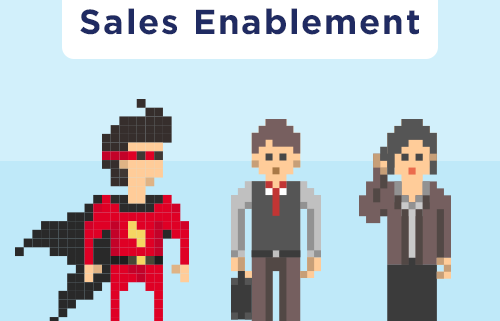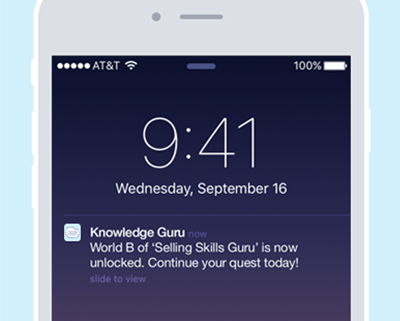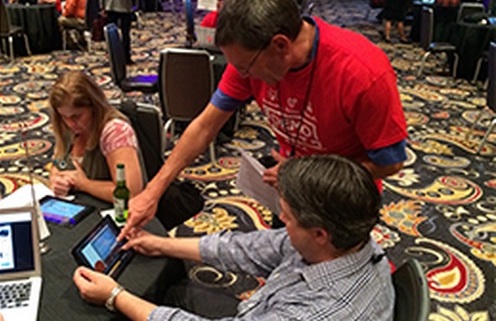The Learning & Remembering Equation (Infographic)
/0 Comments/in Quick Tip /by Holly Bradbury
The eLearning Guild’s DevLearn 2017 conference showcased numerous learning technology solutions. There was plenty of buzz surrounding digital and emerging technologies such as artificial intelligence (AI), virtual reality, augmented reality, interactive video, mobile apps, and games. But the problem with all this hype is that sound learning science risks being ignored.
Regardless of what distribution choice you make, the requirements for learning and remembering remain unchanged. There are certain design factors you must include within your solutions for people to 1) learn and 2) later be able to recall and apply what they learned.
Our brains are wired to forget things. Today’s world is filled with so many distractions that it can be difficult to attend to anything, let alone remember it later. This infographic identifies and explains the learning and remembering equation. Use the equation to help you devise training solutions that truly help your learners recall information when they need it.
The first four factors relate directly to the learning process. The other three relate to remembering what we learned.

Knowledge Guru Updates Visuals, Adds Variety in Spring ’17 Release
/0 Comments/in Quick Tip /by Steven Boller
Visuals and Variety. These two words guided our team’s efforts as we decided on features and improvements for the Spring 2017 release of Knowledge Guru. In our second release of the year, customers now have access to a new, modern look in our ‘Quest’ app and two new mini-games in our ‘Drive’ app.
New Look for Quest
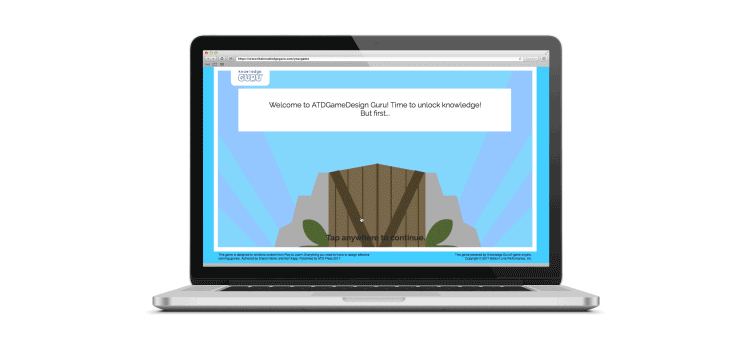
Since its launch in late 2014, Quest has become our most popular Knowledge Guru app. We have updated it with a new, modern look and feel. The minimalist game themes across both desktop and mobile and replaced player characters with game pieces that match the board game aesthetic. See the new look.
New Mini-games for Drive
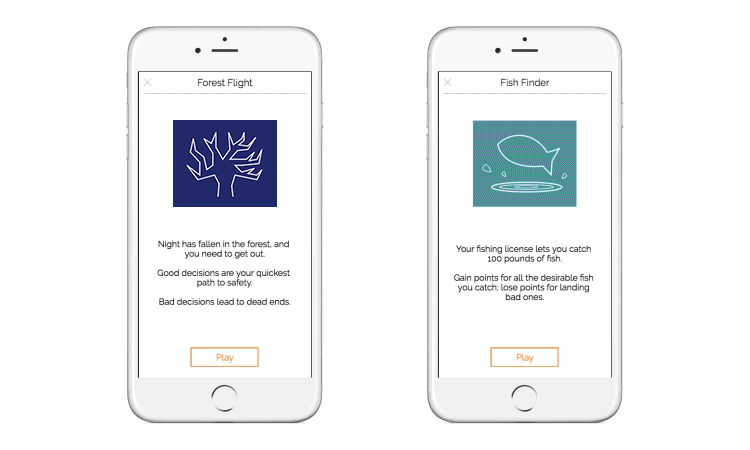
We’ve also added two new mini-games to our newest Knowledge Guru app, Drive. Fish For Facts gives you another option for helping learners build their knowledge comprehension. Forest Flight is a branching scenario game ideal for analysis, synthesis or evaluation. If you are an instructional designer, you may be noticing a pattern: each of Drive’s six mini-games is linked to specific levels on Bloom’s Taxonomy of Learning. Get a tour of Drive.
Speaking of Drive…
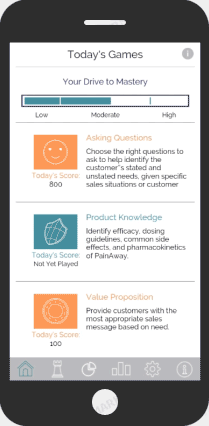
We added the Drive training reinforcement app to the Knowledge Guru platform in late 2016. Players take a short confidence assessment, then receive short, daily mini-games based on their individualized training needs. Drive is a mobile-first training experience, and it is also available for play on desktop computers.
Updated Log-in Experience… with more to come
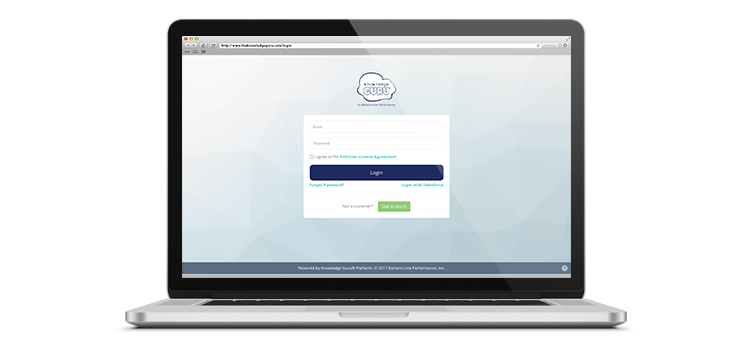
Some visual changes, like an updated login experience for players and administrators, are just a preview of bigger changes still to come. We’ll share more in the months ahead.
See it all at ATD International
We will be showing off the latest Knowledge Guru features in booth 625 at the ATD International Conference & Expo. Coming to the conference and want to chat? Get in Touch to let us know!
About Bottom-Line Performance
The Bottom-Line Performance team launched the Knowledge Guru in 2012. We are an award-winning learning design firm serving a wide range of corporate clients. Since 1995, we’ve helped clients choose the right learning solutions for their learners, while also helping them to design and develop learning tools effectively. Areas of focus include product launches, customer training, internal process training, safety & compliance and more.
We often use Knowledge Guru games as a pre-work or reinforcement activity in the custom curriculums we create.
6 Top-Notch Sessions at ATD TechKnowledge 2017
/0 Comments/in Quick Tip /by Holly Bradbury
We’re speaking and exhibiting at our fourth straight ATD TechKnowledge conference in Las Vegas, Nevada this week. Attendees are in for a treat, as ATD always hosts excellent speakers, top-notch workshops and hands-on learning sessions. The conference will commence Wednesday, January 11th and end Friday, January 13th. I selected my top six sessions and have listed them below. Two of them are presented by Bottom-Line Performance team members: one on mobile learning and the other on learning game design.
BLP will also be exhibiting our Knowledge Guru platform during expo hours in booth 410. We hope to see you there!
1. The Mobile Mindset: How to Wow Your Learners
Presented by: Steven Boller and Jake Huhn
Wednesday, 1/11: 3:00 PM – 4:00 PM
Your employees are already learning on their mobile devices. They are used to interacting with apps and websites that provide an excellent user experience. Unfortunately, some corporate training programs struggle to even provide an adequate user experience. And while mobile learning adoption is increasing, many organizations still lag behind.
This session is presented by two of BLP’s marketing team members, Steven and Jake. They will show how the design principles of the increasingly mobile web can make training more effective and improve learner adoption rates. You’ll learn what responsive web design can teach learning and development, and hear about research on how clean, mobile-inspired design improves results. You’ll also see examples of responsive web apps and native apps that were designed to wow learners on mobile devices, and how various design characteristics contribute to the user experience.
2. Using Human-Centered Design to Create Augmented Reality Experiences
Presented by: Chad Udell
Wednesday, 1/11: 4:15 PM – 5:15 PM
If you’re interested in augmented reality and want useful tips on what makes (or breaks) an interface and user experience for AR, this session is for you. Join the speaker as he details how his company uses human-centered design processes to create dynamic, approachable AR experiences for users of all skill levels. You’ll get an introduction to the current state of AR design, see why AR designs fail, and find out how to make yours more successful. The speaker will share real-world examples and case studies.
3. Lessons from the Trenches of Learning Game Design
Presented by: Sharon Boller
Thursday, 1/12: 2:15 PM – 3:15 PM
Are you interested in learning games and gamification? BLP President, Sharon Boller, will give this session on six lessons from the trenches: 1) play games to make good games; 2) playtest; 3) choose game elements that support learning goals; 4) help players figure out how to play; 5) less is better; and 6) scoring is harder to get right than you think. For each lesson, you get examples and learn best practices to follow and pitfalls to avoid. You’ll also see examples of “good” and “bad” programs, as well as the iteration involved in going from ineffective (bad) to effective (good) games.
4. Using Mobile Devices to Create Design Assets
Presented by: Bianca Woods
Thursday, 1/12: 3:30 PM – 4:30 PM
In this session, you’ll explore apps that can help you build animated videos in less than an hour, create comics without needing to draw, quickly record your own podcasts, and make people who think they can’t draw look like competent artists. You’ll also learn about physical tools that can push your mobile devices even further. By learning more about apps and tools you can use to create some of the media you need, and using a device you already own, you can become more efficient and keep project budgets down.
5. Stop Thinking Like an Instructional Designer: Start Thinking Like a Game Designer
Presented by: Karl Kapp
Thursday, 1/12: 4:45 PM – 5:45 PM
Instructional designers tend to think content first and then action. Game designers think action first. As a result, most games are engaging, intriguing, and immersive. Most instruction tends to be boring and perfunctory. Simply changing your mindset from instructional designer to game designer will help you to create engaging and effective instruction. Learn five methods to help you think like a game designer and change your stale training into an exciting and interesting experience for the learners. Explore how game designers engage players and immerse them in the game environment. Discover how games foster action and activity.
6. Compliance eLearning Reboot and Refresh
Presented by: Hedy Lim and Amber Tanaka
Friday, 1/13: 9:45 AM – 10:45 AM
This session is a case study of how Barton Health made their compliance training program more effective and engaging. Although the healthcare industry demands that their employees receive annual training on compliance topics, the company found ways to shorten, sweeten, and generally make the training less painful. In this session, you will learn about the journey Barton Health took in working with organization leadership, subject matter experts, and the design team. You’ll explore strategies to consolidate and simplify compliance topics, as well as strategies to talk to different stakeholders about compliance training.
How Games Drive Sales Enablement (Webinar)
/0 Comments/in Quick Tip /by Steven Boller
When game elements are carefully linked to learning objectives, good things happen. And when the games are designed or chosen based on the characteristics of target learners, great things happen. This is why so many sales training professionals have started to implement games into their sales enablement programs. They’re interested in going much further than a quick energizer activity. Today’s sales trainers are pairing games with mobile reinforcement and microlearning to help sales reps be successful.
And while many of our customers use the Knowledge Guru platform for sales enablement, it is not always the right type of game-based solution for the learning need. Games are seldom the only learning solution required, either. Most sales enablement programs use blended learning to combine games, mobile, eLearning, video, roleplay and in-person coaching.
Three Broad Categories of Games
Most game-based learning will fit into one of the following categories:
Mobile Games
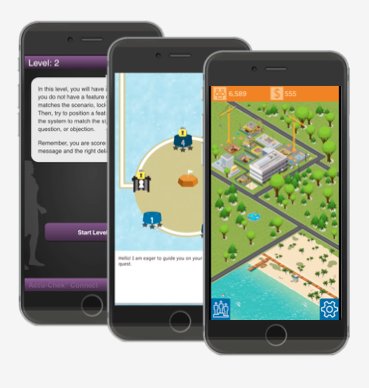
Mobile games are often used as part of live events for application practice as well as for microlearning and reinforcement.
Board Games
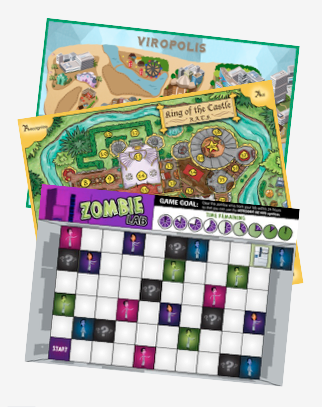
We use board games to encourage team discussion, foster collaboration to achieve goals, provide application practice and/or provide recall practice.
Online Computer Games
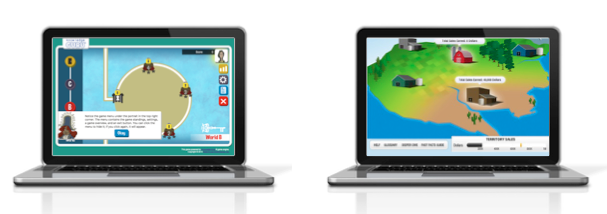
Online computer games work great for application practice, pre-work for live events and post-training reinforcement depending on learners’ device of choice.
Many Different Types of Games
There are many different game elements to choose from, depending on the learning need. If you’d like to learn more, Sharon Boller has written a white paper showing how different game elements link to the four elements required for learning to happen.
For example, Knowledge Guru games use game goals, challenges and reward structures and story to increase learner motivation.
Game-Based Learning Best Practices
No matter what type of game you are incorporating into your learning curriculum, you’ll want to follow these best practices.
- Design game to meet specific learning objectives.
- Focus the game on more than winning/losing.
- Embed learning within curriculum; include reflection activities.
- Get learners comfortable with rules and game play before starting – or build in tutorial guidance.
- Keep rules, scoring, and leveling simple.
- Create ways for learners to work in groups or teams.
- Match cognitive activities in the game to the cognitive activities required on the job.
- Make sure winning is the result of knowledge or skill acquisition – and not chance.
- Plan for replay-ability; you want repetition and you want people to be able to try again.
- Keep rules, scoring, and leveling simple (Yes, this is a repeat!)
Learn More in our “Sales Enablement and Beyond” Webinar
The recording of our “Sales Enablement and Beyond” webinar features a global product launch case study where Knowledge Guru was used along with a variety of custom games. It also includes tips for linking games to learning and implementing games as a learning strategy.
Microlearning Madness: 25 Great Resources
/0 Comments/in Learning Research, Quick Tip /by Steven Boller
Over the last five to ten years, corporate learning professionals have scrambled to engage their learners in an increasingly digital world. Learning trends such as mobile, gamification, game-based learning, performance support, use of learning science and interactive video are all attempts to capture learner attention and engage them on a deeper level. With so many distractions to compete with, learner attention comes at a premium. Training has to be engaging for it to stick.
Recently, these learning trends and delivery methods have converged to make a new trend, microlearning, possible. With time available for training and learners’ patience for cumbersome learning experiences decreasing, there is more pressure than ever before for L&D professionals to deliver bite-sized training that is highly effective.
At its best, microlearning leverages learning science to space out content and build long term memory. It helps learners build on knowledge they already have and provides immediate access to short, targeted lessons and support materials. At its worst, it becomes another distraction to ignore.
We’ve compiled 25 of our favorite microlearning articles to make it easier to learn about “bite-sized learning” and implement it effectively. This article isn’t going anywhere, so bookmark it for reference and come back whenever you need more inspiration!
Our 25 Favorite Microlearning Resources
- How to Make Microlearning Matter – Annie Murphy Paul, SHRM.org (Link)
- Microlearning: Fab or fad? – Tom Spiglanin, TomSpiglanin.com (Link)
- The Myth of Micro-Learning – Sharon Boller, Bottom-Line Performance (Link)
- Defining Microlearning? – Clark Quinn, Learnlets (Link)
- Microlearning: What It Is and What It Isn’t – Holly Hilton, Bottom-Line Performance (Link)
- 5 Learning Trends to Watch in the Next 5 Years – Karl Kapp, TD.org (Link)
- Micro-learning as a workplace learning strategy: Sahan Chattopadhyay, ID and Other Reflections (Link)
- Is Microlearning a Myth? Sharon Boller, ATD Press (Link)
- Is Micro-Learning the Solution You Need? – by Connie Malamed, The eLearning Coach (Link)
- Why companies are moving to microlearning platforms for training, Simon T Bailey, The Business Journals (Link)
- Can Micro-Learning help stressed, unmotivated learners? – Sharon Boller, Bottom-Line Performance (Link)
- Enterprise Microlearning – Marcia Conner, MarciaConner.com (Link)
- 4 Steps to Microlearning Mastery – Brian Bishop, eLearningIndustry.com (Link)
- Micro-learning: Its role in formal, informal and incidental learning Sahan Chattopadhyay, ID and Other Reflections (Link)
- MicroLearning on a Mobile Device – Jennifer S Beaudin, Stephen S. Intille, Margaret E. Morris – MIT (Link)
- Microlearning in Mobile and Flipped Contexts – Educause (Link)
- Microlearning – Edutech Wiki (Link)
- Ideal Learning Event – Karl Kapp, KappNotes (Link)
- Microlearning: Best Practices for Corporations – Monica Singh, General Assembly (Link)
- What is Micro-Learning? – Articulate “E-learning Heroes” blog (Link)
- From Courses to Micro-Learning – Sahan Chattopadhyay, ID and Other Reflections (Link)
- The Story Behind Micro-Learning – David Cutler, Spin Education (Link)
- The MicroLearning trend: Accommodating cultural and cognitive shifts – Jeff Fernandez, Learning Solutions Magazine (Link)
- Gaming, Micro-Learning and Mobile: The Perfect Trio – Steven Boller, Knowledge Guru by BLP (Link)
- 7 Tips to Create Memorable Microlearning Online Training – Christopher Pappas, eLearningIndustry (Link)
Our Knowledge Guru platform combines microlearning, games and mobile reinforcement.
5 Learning Trends to Watch at #ATD2016
/0 Comments/in Quick Tip /by Steven Boller
Some learning trends end up changing the corporate learning world for good. Others turn out to be fads, here today and gone tomorrow. But no matter what their staying power might be, trends become popular for a reason. Either the trend is being put in practice in a meaningful way or the idea of the trend is closely tied to a common pain point.
The ATD International Conference (May 22-25 in Denver) promises to be a great way to learn about the latest learning trends and to check in on the trends that have been growing over the last several years. ATD is the largest conference dedicated to the corporate L&D space, so sorting through the list of sessions and exhibitors can be daunting. If you’re interested in learning about “the trends” at ATD ICE, consider this article your ATD Conference Survival Guide.
Here are five trends to watch for at the ATD conference, along with a suggested session at ATD ICE 2016 that covers the trend. The trends are listed in the order the sessions occur, so you can consider this your very own “Learning Technology Track” if you’d like!
1. Microlearning
Microlearning involves delivering learning experiences in small but meaningful chunks. Think short, targeted bursts of learning instead of lengthy lectures or courses. Microlearning is either available on-demand or pushed to learners in regular intervals.
Plenty of vendors will tell you that microlearning is all about millennials, although research fails to back that up. Microlearning is really being driven by a shift in media consumption habits that impacts all generations. And while it is a highly useful learning method, let us be the first to offer a word of caution.
Recommended Session:
Tech Tapas: Plating Your Microlearning
Presented by Jacqueline Glass, Zeiders Enterprises
Sunday, 5/22 11:45 am – 1 pm
Session Link
2. Games and Gamification
Ah yes, our favorite trend. We’ve been supporting the use of games and gamification for learning for almost 10 years now. This trend is more mature than the others: Gartner says it is finally headed to the mainstream.
Game-based learning means that learning happens through, you guessed it, a game with a defined game goal and learning goal. Sometimes, a learning game is called a serious game. Gamification is the application of game mechanics and game elements to non-game activities. Whichever side of the coin you are interested in, you can learn more about it at ATD ICE.
Recommended Session:
Play to Learn: Playing Games to Learn How to Design Games
Presented by Sharon Boller, Bottom-Line Performance
Monday, 5/23 4:30 – 5:30 pm
Session Link
This session occurs at the same time as our suggested adaptive learning session, so pick your favorite!
3. Adaptive Learning
Adaptive learning is a trend that is still farther out on the horizon, although some great examples of it already exist. Essentially, the learning content (the output) changes based on the performance of the learner (the input). A great example of adaptive learning that also uses gamification is the brain training platform Elevate, available for free on iOS and Android. Our own Knowledge Guru platform incorporates adaptive learning in the minigames learners play at the end of each topic.
Recommended Session:
Adaptive Learning: Unleashing the Holy Grail of Deep Learning Measurement
Presented by Glenn Bull, Skilitics
Monday, 5/23 4:30 -5:30 pm
Session Link
4. xAPI
The xAPI is another trend that was being talked about several years ago. It’s been called many different names (Tin Can API, Experience API, xAPI) and promises to eventually replace SCORM as the standard for learning measurement. xAPI is useful because it allows for a wider variety of experiences, such as the various learning trends described here, to be tracked in a system of record like an LMS. xAPI also allows for more detailed and useful learning analytics to be captured.
Recommended Session:
Adventures in xAPI
Presented by Megan Torrance, TorranceLearning
Tuesday, 5/24 1:oo pm – 2:00 pm
Session Link
5. Mobile reinforcement and performance support
Last but certainly not least, you can learn about how learning experiences are being created for the device you’ll likely be holding in your hand for the majority of the conference. Mobile learning has come a long way since it was first being hyped up at conferences, and a growing number of organizations actively deploy mobile-first learning experiences to their employees. The effective use of mobile is essential to making many of the other trends I have described possible.
Recommended Session:
Getting the Most out of Mobile in Performance Support
Presented by Scott McCormick, Float Mobile Learning
Wednesday, 5/25 1:30 pm – 2:30 pm
Session Link
Come and See us at ATD ICE 2016

We will be exhibiting at ATD International for the fourth straight year, and our President, Sharon Boller is delivering two sessions. You can learn all about our conference activities by clicking the button below:
5 Ways to Improve Knowledge Retention With Games and Mobile
/0 Comments/in Quick Tip /by Steven Boller
The corporate training world has come a long way over the last several years. While unwieldy Powerpoint slides and lengthy webinars are still out there, most organizations know better. The important message that “one and done” is never a sound training strategy is getting through to people, which explains the uptick in interest in learning products designed to improve knowledge retention.
When knowledge retention is the goal, the mobile phone is often the delivery method of choice. It’s not a generational thing: most people are absolutely addicted to their phones and spend lots of time consuming content on these devices. With the launch of our new smartphone app for Knowledge Guru, we are excited to bring the learning science that makes the platform so effective for knowledge retention to learners’ mobile devices.
No matter what tool or technology you use to reinforce knowledge, here are five tips for getting the most out of a mobile delivery method:
1. Use push notifications and email to pull learners in
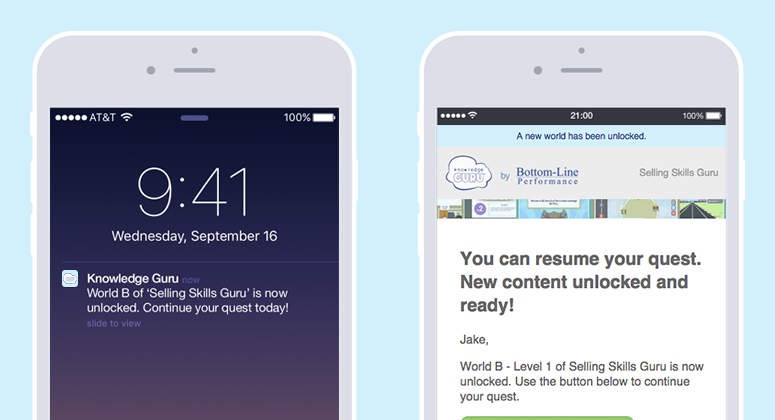
Your learners are probably busy people and need consistent reminders and encouragement to re-engage with training content. Your app or game could be ten times more interesting than the eLearning courses on your LMS and still not be enough to pull people in without frequent reminders. When possible, give learners the option of either receiving push notifications or email reminders prompting them to answer questions and re-engage with your content.
2. Have learners play in short bursts
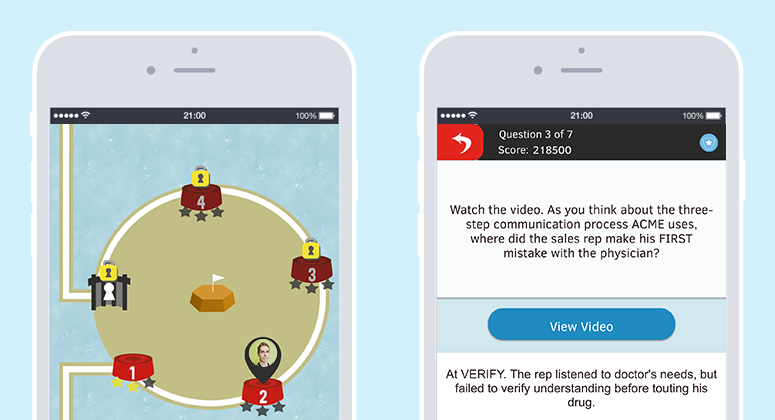
Mobile games that are popular with consumers, such as Clash of Clans and FarmVille, are designed to be played in just a few minutes at time. This usage pattern is ideal for increasing knowledge retention: we learn and remember more when training sessions are spaced out into small chunks over time. Games that only require a few minutes of play a time yet encourage repeat play are best for helping learners remember.
3. Use engaging gameplay to motivate and inspire
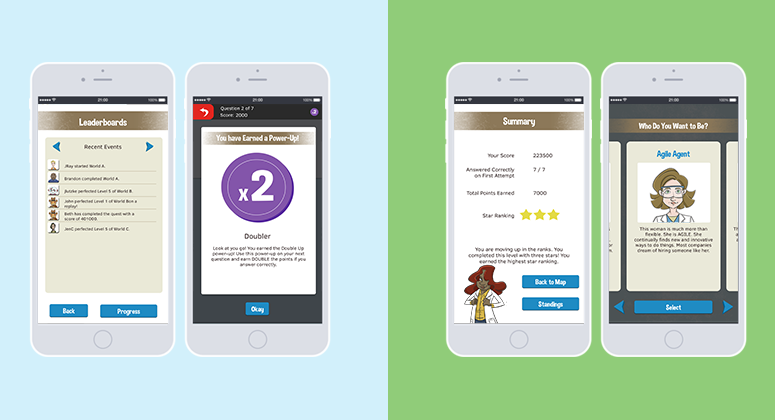
Whether or not a game is fun is subjective, so it is important to understand the preferences of your target learners. For example, some organizations opt for a custom Knowledge Guru theme so that the setting and characters feel appropriate to their players. It’s also important to keep retention-based games simple: as a general rule, games designed to increase retention should be easy to play so that learners do not spend too much mental energy learning the rules of the game. You’ll be surprised how simple a retention-driven game can be when learners are motivated to increase their knowledge.
4. Incorporate external resources into the game

Sometimes, the goal is not to help learners recall something from memory but rather to help them find and locate the correct information. In these cases, linking to external resources such as PDFs or online tools from within the game itself can be highly useful. If the game is question-and-answer driven, be sure to incorporate mixed media such as images and video to provide a richer learning experience.
5. Use analytics to spot problem areas and adjust
The benefit of using a mobile retention tool is that it is probably not stuck within the walls of your LMS. This means that a wider variety of analytics are available! Use analytics to track what learning objectives and questions learners are struggling with, then send out further reinforcement on the problem areas.
Continue your mobile learning research!
Find out if your training is mobile friendly, or mobile first… and why it matters. Read Is Your Training “Mobile Friendly” or “Mobile First”? on our Bottom-Line Performance blog.
BLP Teases Knowledge Guru Fall Release at DevLearn
/0 Comments/in Quick Tip /by Steven Boller
Fall is in the air. For us at BLP, that means it’s DevLearn season.
DevLearn is the premier learning conference for emerging trends and technology. Our team has attended DevLearn for years to learn about the latest, greatest learning solutions before they “hit the shelves” for most of our clients. Since 2012, we have attended the conference as exhibitors to show off the latest releases of our Knowledge Guru platform.
Each year we have attended DevLearn, Knowledge Guru seems to have grown so much from the previous year. But while we have added features and functionality, the core value proposition (help employees learn and remember things like product knowledge, policies and procedures) remains the same.
Here is where we’ll be, and what we’ll be doing, at this year’s DevLearn conference:
Pre-Conference Workshop:
On Tuesday 9/29, BLP President Sharon Boller partners with Dr. Karl Kapp to deliver their acclaimed workshop, “Play to Learn – Designing Effective Learning Games.” Participants will spend the second half of the workshop building a paper prototype of their own learning game. More Info.
Expo:
We will show off the latest features of our Knowledge Guru platform in Booth 216 of the expo. You’ll be able to catch a glimpse of our soon-to-be-released smartphone app for Knowledge Guru as well as see the latest custom learning solutions we have created. One attendee will win a Knowledge Guru subscription each day. Let us know you’re coming.
Gamification Panel:
Sharon Boller is a featured panelist for “The Past, Present and Future of Games for Learning” at 3 pm on Wednesday, 9/30.
Learning Stage Session – Serious Games + Smart Implementation = Win:
My session takes four case studies from organizations that have successful used Knowledge Guru games and distills them down to seven practical implementation tips. It’s on Thursday, 10/1 at 10 am.
DemoFest:
We will show off “Password Blaster”, a mobile game used as part of a large Info Asset Protection curriculum, at DevLearn DemoFest. DemoFest is on Thursday, 10/1 from 4-6 pm.
Lessons from the Trenches of Digital Game Design:
Sharon Boller will give her concurrent session on digital game design on Friday, 10/2 at 10 am.
Follow the Action:
Can’t attend DevLearn? We’ll be sharing some of the content we are discussing and presenting from our Knowledge Guru twitter account.
Will We See You at DevLearn:
If you are coming to the conference and would like to meet, drop us a note.
Knowledge Guru Summer Release Adds 6 New Languages and Another Game Spacing Option
/0 Comments/in Quick Tip /by Brandon Penticuff
The Knowledge Guru platform continues to expand its features and functionality using customer feedback as our guide. Our Summer 2015 Release is all about expanding your options globally. We are introducing six new languages so you can expand your coverage to non-English speaking learners across the globe. We have also expanded the ways you can use spaced repetition within our Quest game type to maximize retention.
Six New Languages available; Spanish for Everyone!
With the Summer Release, Enterprise subscribers now automatically have six new languages to choose from in addition to standard English: Chinese, French, German, Italian, Japanese, and Spanish. If you are a current customer, you will find these options in your Game Author tool, under the Customize tab. Just click the drop-down box for Theme and select the one you need.
Standard and Premium subscribers have also been updated with the Spanish language option.

More options for Game Spacing in Quest
The most powerful feature of Knowledge Guru’s award-winning design is the spaced repetition it provides. In our Quest game type, administrators have already been able to turn on automatic spacing so that players can only play one topic per week. This design maximizes knowledge retention and encourages gameplay in short chunks.
But while weekly spacing is optimal from a learning science standpoint, it is not always practical in real-world implementations. Thanks to some helpful feedback from our customers, we’ve added a new spacing option that allows players to play an entire world in a single day, then return the next day to play another world. This allows players to complete a game quickly while still benefitting from the spaced repetition of the platform.
Updated Knowledge Base Articles
We have added several new articles in our knowledge base to help you get the most out of your Knowledge Guru subscription. Remember, you can access the Knowledge Base at any time by clicking the “Getting Started” tab in your Game Author tool, and selecting Knowledge Base.
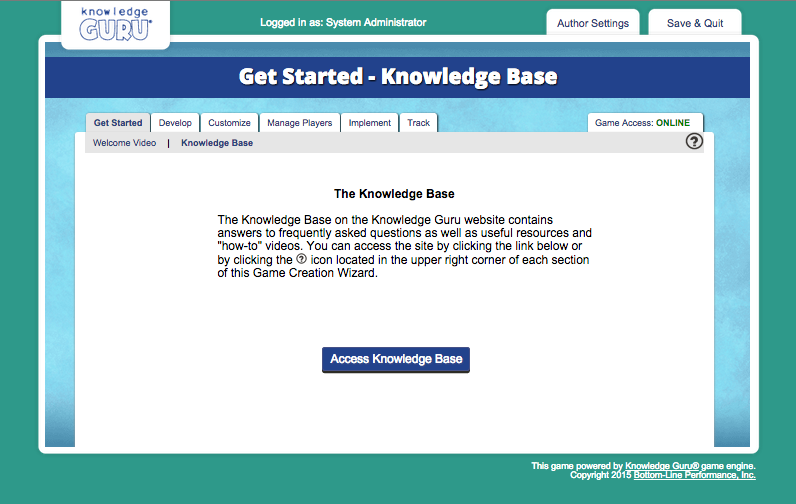
Want to help inform the Fall Release?
Our Fall 2015 release will be here before you know it… and we have some exciting new features planned. Part of the release will be an integration with Salesforce, and we would love to consider your feedback as we continue development. Fill out our four question Salesforce Integration Survey to let us know what features you would like to see in a Salesforce integration.
Contact Us
TiER1 Performance
P.O. Box 155
New Palestine, IN 46163
(317) 861-7281
hello@tier1performance.com
Newsletter
Great question. I am thinking about knowledge-based learning...October 17, 2014 - 8:44 pm by Sharon Boller
I would say it depends how you classify games, which are...July 17, 2014 - 4:19 pm by Nick Draeger
You are right; it would be virtually impossible for a game...July 16, 2014 - 1:35 pm by LessonsOnLearning



